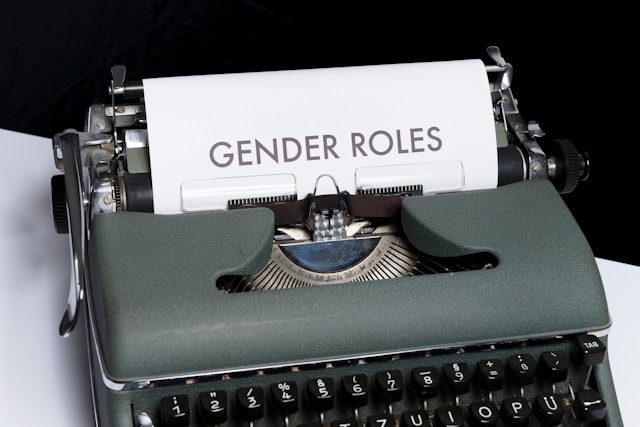Introduction
Child labour is a pervasive issue in Africa, affecting millions of children across the continent.[1] While both boys and girls are subjected to the rigors of child labour, the impact on each gender can be markedly different due to societal norms, the types of work they are engaged in, and the additional vulnerabilities faced by girls. This article explores how child labour impacts boys and girls differently, with a particular focus on the unique challenges and exploitation faced by girls.
Gender-Specific Roles in Child Labour
In many African societies, traditional gender roles dictate the types of labour that boys and girls are expected to perform.[2] Boys are more commonly found in physically demanding jobs such as agricultural work, mining, fishing, and street vending. These roles are not only physically taxing but often dangerous, exposing boys to various hazards such as heavy machinery, deep waters, or harsh weather conditions.[3] Despite these challenges, these jobs are more visible to the public eye and authorities, increasing the likelihood of regulation and intervention by government bodies, non-governmental organizations, and international agencies. Such visibility can lead to better enforcement of labour laws and protective measures, reducing the risk of exploitation and ensuring better working conditions for boys.
Girls, on the other hand, are frequently engaged in domestic labour and caregiving roles. This type of work includes cooking, cleaning, fetching water, and caring for younger siblings or elderly relatives. Unlike the roles assigned to boys, domestic labour is often hidden within private households, making it less visible to authorities and more difficult to regulate. The private nature of domestic work means that girls can be more isolated, performing tasks that go unnoticed by the outside world. This isolation makes them particularly vulnerable to exploitation, abuse, and neglect. Furthermore, because this type of labour is undervalued and often unrecognized as ‘real work,’ girls engaged in domestic chores are less likely to receive support or protection from labour laws and social programs. Consequently, they are at a higher risk of long-term physical and psychological harm, missing out on educational opportunities, and being trapped in a cycle of poverty and subservience.[4]
Additionally, the societal norms that dictate these gender roles reinforce a cycle of inequality. Boys, through their more public roles, gain skills and experiences that can be more readily translated into economic opportunities and social mobility. Girls, however, are often deprived of such opportunities, as their work within the household does not provide them with the same level of skill development or social capital. This division of labour not only perpetuates gender inequality but also hinders the overall economic and social development of communities, as the potential contributions of girls remain underutilized and undervalued.
Vulnerability to Exploitation and Abuse
Girls involved in child labour, particularly in domestic settings, are at heightened risk of various forms of exploitation and abuse. The isolated nature of domestic work means that girls can be subjected to physical, emotional, and sexual abuse with little opportunity for recourse. They often work behind closed doors, in private homes where there is minimal supervision and external intervention. This seclusion makes it difficult for them to seek help or escape from abusive situations. Moreover, the power dynamics within households, where employers hold significant authority over their domestic workers, often prevent these girls from speaking out or seeking assistance. Fear of retaliation, job loss, or further abuse traps them in a cycle of exploitation and mistreatment.
In contrast, boys, though also vulnerable, tend to work in more public and communal settings where there may be greater opportunities for oversight and intervention. Boys are often found in jobs such as street vending, construction, or working in markets, where they are more visible to the community and authorities. This visibility can provide a layer of protection, as there is a higher chance that abusive behavior will be noticed and reported. However, boys engaged in hazardous work such as mining or agriculture face significant physical dangers. These occupations expose boys to severe risks, including injuries from heavy machinery, falls, and exposure to harmful substances like pesticides and chemicals.[5] While they might avoid the isolation that girls in domestic labour experience, the physical dangers they encounter can have long-term health consequences and pose immediate threats to their safety.
Addressing the Gender Dimensions of Child Labour
To combat child labour effectively, comprehensive legal frameworks must be established to explicitly prohibit all forms of child labour, with specific provisions addressing the unique challenges faced by girls, such as domestic work. Effective enforcement mechanisms, including training for law enforcement and labour inspectors on gender-specific issues, and accessible reporting systems for violations, are essential. Empowering girls through community programs that provide information, skills, and resources to advocate for their rights, alongside efforts to challenge cultural norms perpetuating gender-specific roles, is crucial. Additionally, economic assistance and sustainable livelihood programs tailored to the needs of families with girls can help reduce reliance on child labour.
Conclusion
Child labour in Africa impacts boys and girls differently, with girls facing additional vulnerabilities due to societal norms, the nature of their work, and the risk of exploitation and abuse. Addressing these gender-specific challenges requires a comprehensive and nuanced approach that enforces protective laws and engages communities in shifting cultural attitudes. By focusing on the unique needs of girls and ensuring equal opportunities for all children, it is possible to break the cycle of child labour and create a more equitable and prosperous future for the next generation.
[1] International Labour Organisation ‘What is child labour’ <https://www.ilo.org/ipec/facts/lang–en/index.htm> accessed 8 May 2024.
[2] Michael Kevane ‘Women and development in Africa: How gender works’ (2004) Lynne Rienner Publishers 125.
[3] Anjana Verma ‘Child labour: The effect on child’ (2018) 3 International Journal of Advanced Educational Research 83.
[4] Paola Roggero, Viviana Mangiaterra, Flavia Bustreo, and Furio Rosati ‘The health impact of child labour in developing countries: evidence from cross-country data’ (2007) 97 American Journal of Public Health 271.
[5] Verma (n 3) 83.
